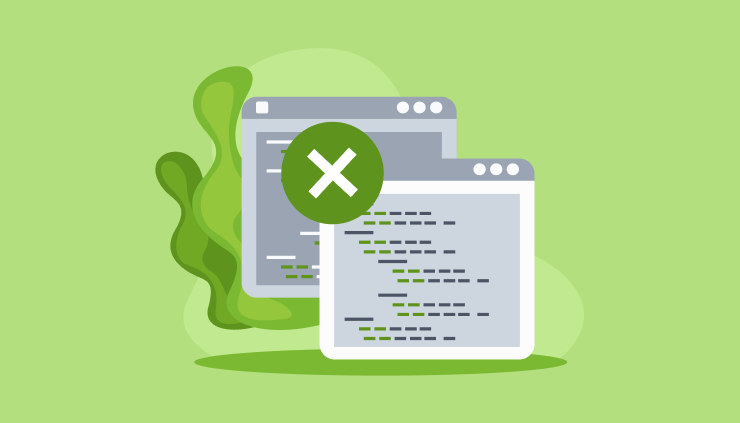Deepgram (Speech-to-Text) Integration in LMS [Case Study]
Among the most promising and profitable areas is the sphere of education and advanced training. In order to make the creation of training courses as easy as possible and to effectively train employees, learning management systems (LMS) are used.
Such services provide all the tools to train students, develop an individual lesson plan, perform certification, and collect statistics and analytics. Using the Deepgram API for speech transcription greatly enhances the availability, functionality, and effectiveness of educational materials in the learning management system. In this article, we will consider the case of SDH on integrating Deepgram STT technology into a client's LMS.
Using Deepgram in LMS
What are the features of the learning management system (LMS)? LMS can be developed as a cloud-based service or “boxed” software installed on the client's server. They allow to save and reduce the required training management time. Through various integrations, including AI tools, LMS is becoming a powerful remote learning engine for students around the world.
The Deepgram API (Speech-to-Text or STT) can be used in an LMS to convert speech contained in audio or video materials into a text format. Here are some examples of cases where Deepgram AI speech recognition technology can be used to improve the educational process.
1) Learning a foreign language:
- Providing students with audio recordings in a foreign language.
- Converting native speakers’ speech into texts so that the students can listen to it and read the transcription at the same time.
- Creating tasks for listening with the ability to check the correctness of answers based on transcription.
2) Webinars and online courses:
- Automatic generation of transcriptions for recordings of webinars and lectures.
- Providing students with permanent access to text versions of online courses and webinars.
3) Adaptation to different learning styles, such as for visual and audio learners.
4) Support for hearing-impaired students.
5) Creating accessible educational materials for students with different levels of abilities and preferences.
6) Analysis and progress tracking:
- Allows instructors to analyze popular topics or difficult points in lectures based on text versions of materials.
- Allows more accurate evaluation of oral presentations.
7) Students can save transcripts of lectures and additional notes for future use.
8) Creating interactive training modules and audio/text content.
Thus, Deepgram STT can significantly enrich the functionality of LMS and improve the quality of the educational process with the help of more accessible, interactive, and adapted educational materials.
Benefits of Deepgram Speech-to-Text
Automatic transcription of speech using the Deepgram API eliminates manual labor of transcribing audio into text format, which saves a lot of time and resources. The main advantages of technology for LMS are as follows:
- transcription of lectures and materials;
- accessibility for persons with disabilities;
- indexing and searching by content;
- process automation;
- interactive learning;
- analysis and research.
Deepgram STT is used to transcribe lectures and materials. As a rule, audio and video recordings of lectures, seminars, and webinars are provided in the LMS. Speech-to-text makes it easy for students to read and understand content and take notes.
Text transcriptions can be used to create interactive learning modules, including lecture and video content testing. For example, language-learning LMS products use Deepgram to convert speech to text and vice versa to detect pronunciation and speech comprehension errors, as well as decoding problems.
For the hearing impaired or those who prefer reading text to listening to audio, speech transcription makes learning materials accessible.
Text transcriptions can be indexed by LMS search engines, allowing students to search and quickly find specific lecture or video segments containing information of interest to them.
Teachers can use transcriptions to analyze the quality of their lectures, identify popular topics or difficult points, and provide feedback to students.
Read also: Rostering Integration to Education Software: Classlink & Clever
Difficulties of integrating Deepgram into LMS development
Integrating speech recognition technology into an LMS can face certain limitations and challenges:
- Since speech recognition requires good audio quality, poor acoustic recording, noise, or poor microphone quality can affect recognition accuracy.
- Accents and dialects can lead to difficulties in understanding different accents, dialects, or language variations, which can lead to inaccurate transcriptions.
- Integration requires a stable internet connection and server-side audio processing capabilities. Insufficient resources or an unreliable connection can cause delays or failures in processing. So, Deepgram STT's real-time streaming lag is <300 ms.
- If a LMS contains sensitive information, such as personal data of students, lecture notes, etc., it is necessary to ensure a high level of security in transmission and processing of audio data.
- No speech recognition technology is perfect. The potential for errors can be high, especially under difficult acoustic conditions or when specific terms are used.
- The technology cannot always correctly interpret the meaning and context, which can lead to incorrect transcriptions.
- Some solutions require models to be trained on your specific data to improve accuracy. This may take time and expertise.
- Using third-party APIs for speech recognition can be costly, especially with large volumes of audio. It is necessary to balance costs with benefits for the users of the LMS.
Integration of Deepgram API STT into a Django-based LMS app
The Deepgram API documentation provides comprehensive answers on how to integrate the service into any application.
The integration process includes the following steps:
1) Obtaining a Deepgram API key. The first step is to get an API key from Deepgram which you will use for your API requests.
2) Django project setup. Setting up access to third-party APIs through the settings.py file, where the developer specifies the necessary keys and settings for external services.
3) Creation of API requests. To do this, you should use the requests library to create HTTP requests to the Deepgram API. An example request for an audio transcript might look like this:
''import requests
url = "https://api.deepgram.com/v1/listen"
headers = {
"Authorization": f"Bearer {YOUR_DEEPGRAM_API_KEY}",
"Content-Type": "application/json"
}
data = {
"content": {
"url": "URL_TO_YOUR_AUDIO_FILE"
}
}
response = requests.post(url, json=data, headers=headers)
transcript = response.json().get("results")[0].get("alternatives")[0].get("transcript")''
4) Handling the response:
- The Deepgram response will contain the transcription of the text. This text can be used in your LMS application for further processing.
5) Integration into your LMS application:
- Depending on the goals, developers can integrate the resulting transcription into your LMS application. For example, save the transcription in the database, link it to specific audio files, associate it with specific lessons, etc.
6) Handling errors and security errors:
- When integrating, it is always worth considering possible errors and exceptions that may arise when interacting with the API. Also, consider security and keep your API keys in a safe place.
7) Testing.
In addition, Deepgram can provide various options and parameters to customize queries and get more accurate results. For more information and up-to-date API documents, please refer to the Deepgram documentation.
SDH case: Integration of Deepgram STT into LMS with 470k students
Project: US-based gamified LMS for teaching children to read. About 470 thousand students and 22 thousand teachers use the system, which makes this product highly loaded and multi-component.
Problem: The team was working on creating a feature to develop phonemic awareness and decoding skills in children. It was necessary to develop a tool with the ability to store children's voice recordings and the results of voice-to-text conversion.
Duration of implementation: 1 month.
Solution:
The SDH team tested several open-source STT solutions and Deepgram occurred to be the only one that met all the requirements for performance, scalability, and accuracy.
For example, with an accuracy rate of 75% to 80% in other STTs, Deepgram demonstrates a speech conversion accuracy of 90 to 92%. But that's not even the point, because some other solutions showed the desired WER (word error rate) while remaining not scalable, with a non-constant transcription rate.
The reliable STT allowed the SDH team to focus on API implementation and offer customers a quality product.
Results:
The integration of Deepgram STT made it possible to implement a high-performing verbal decoding module in LMS in a short time and at a low cost. And in 2023, the LMS product passed the first stage of SOC 2 certification.
The Software Development Hub company is ready to develop a viable solution with working STT technology for your product: Using current technologies will allow you to retain customers and solve their needs, which will properly reflect on the income and recognition of your business.
Categories
Share
Need a project estimate?
Drop us a line, and we provide you with a qualified consultation.

![Deepgram (Speech-to-Text) Integration in LMS [Case Study]](/media/cache/a0/e3/a0e3fc2ebb6552544bae32539d56ae3e.jpg)






